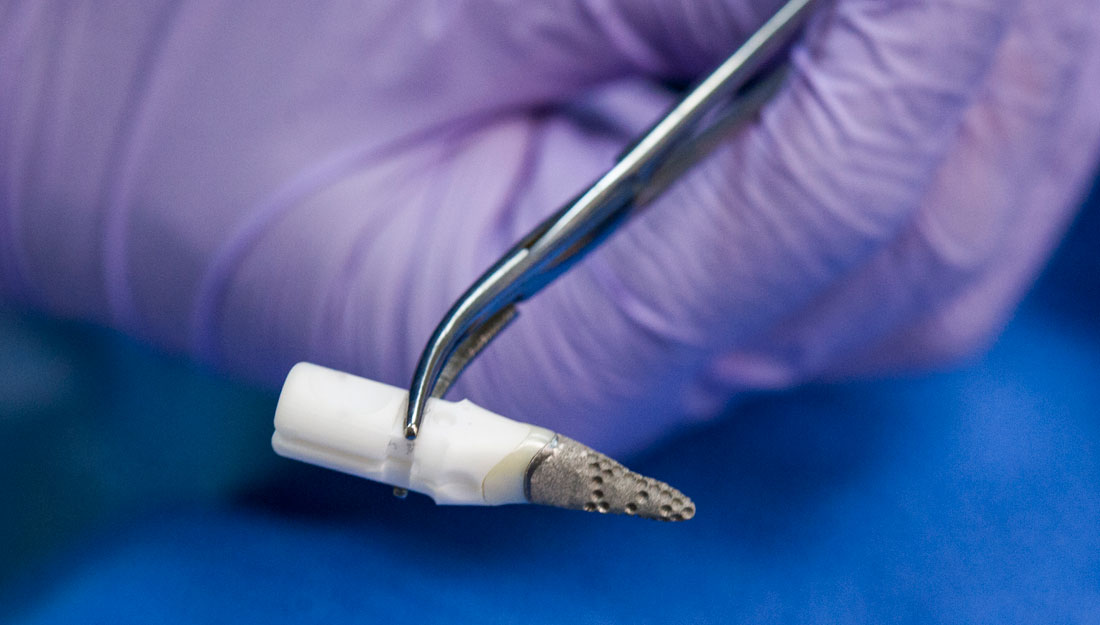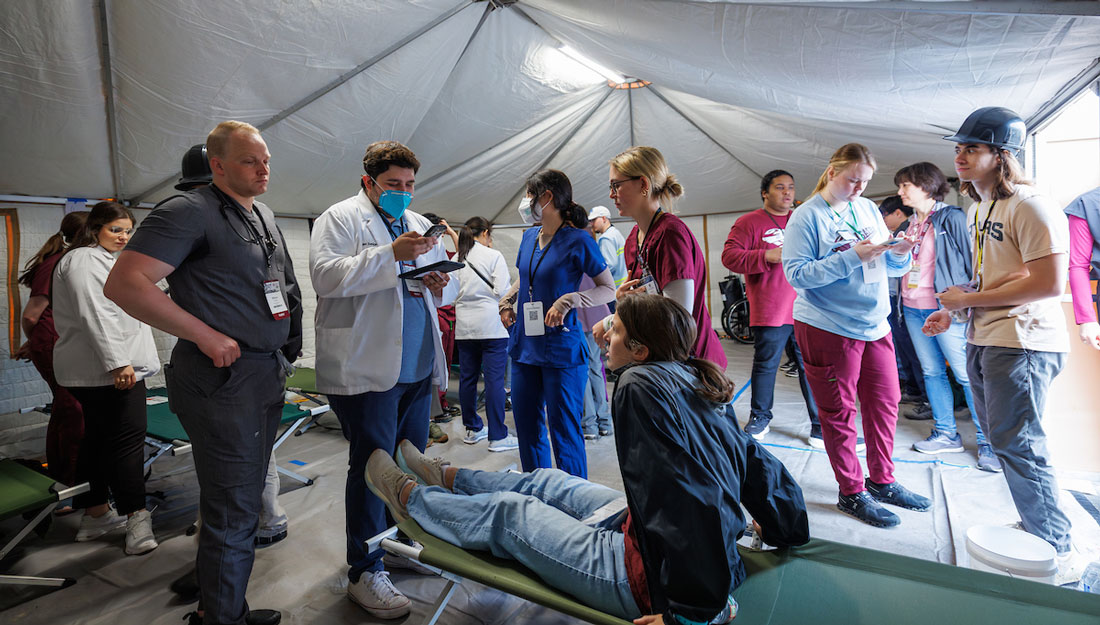- Jennifer Fuentes
- Dentistry, Editor's Pick, Show on VR homepage
Dental implants: A patient’s perspective
Researchers are conducting a clinical study to gather data for the U.S. Food and Drug Administration on a new tooth replacement system

Ann Smith* is the last person you’d expect to volunteer for a dental research study. She has severe anxiety when it comes to dental work—so much so that she opts to receive nitrous oxide (laughing gas) for her biannual teeth cleanings.
It’s not that the Plano, Texas, native has exactly had it easy with regard to her dental health. An unfortunate experience at a pediatric dentist left her dreading dental appointments since childhood. And at age 15, a four-wheeler accident caused a crushing blow to the right side of her face, damaging the nerves in her jaw. So Smith, the teen with an intense fear of dental work, underwent a root canal to a lower premolar.
She went without incident for more than 10 years, but just before the 2015 holiday season, the pain resurfaced.
“It started hurting out of nowhere, literally woke me up in the middle of the night,” Smith said. An appointment with her dentist revealed the source of the discomfort: an infection due to a crack at the bottom of the tooth. This time, he told her, it could not be saved.
“When my dentist told me that the tooth would have to come out, I immediately started crying, more out of fear than anything,” Smith said.
That’s when her dentist recommended Texas A&M University Baylor College of Dentistry (TAMBCD), where researchers are conducting a clinical study to gather data for the U.S. Food and Drug Administration on a new tooth replacement system.
The REPLICATE Immediate Tooth Replacement System is a new approach to single-tooth replacement and is said to offer patients an immediate, minimally invasive alternative to traditional dental implants and three-unit bridges.
Made of titanium and zirconia, the Replicate tooth is an anatomical copy of the patient’s natural tooth—made using data obtained from a 3-D X-ray—that fits into the space occupied by the tooth being extracted. The customized Replicate tooth allows general dentists and specialists to place it into the extraction site and protect it by attaching a tooth-shaped cover shield to the adjacent teeth, so the patient never goes without a tooth. After six months, the Replicate tooth is fully restored with a crown.
Smith’s reaction to the streamlined process involved with the Replicate system was uncharacteristic. “Upon receiving the information about how this implant works I was actually calm and kind of excited,” she said.
Next steps to bring the product to the U.S. market include integration tests, which will be conducted a year after each patient’s Replicate tooth is placed. At that point, TAMBCD researchers will submit final results to the U.S. Food and Drug Administration. The system has been used in the European Union (E.U.) since 2013.
“We did our initial clinical testing with a small group of doctors in Germany, Switzerland and the Netherlands,” said Lea Nesbit, CEO of Natural Dental Implants, makers of the Replicate system. “Now it is available to patients throughout the E.U. We are excited to be working with Texas A&M Baylor College of Dentistry to bring the system to the United States.”
“This will change how implants are done, mostly by shortening the treatment period,” said Elias Kontogiorgos, D.D.S., Ph.D., director of implant dentistry in restorative sciences and principal investigator on the study. “If patients qualify for a Replicate tooth, they will receive the implant the same day their tooth is removed. Current techniques generally call for a three-month healing period after extraction before the implant is placed. Dentists will have more options to give to their patients who still have a tooth in the socket.”
Co-investigators on the study are Likith Reddy, M.D., D.D.S., associate professor and director of residency training in oral and maxillofacial surgery, and Lynne Opperman, Ph.D., Regents Professor in biomedical sciences and director of technology development.
Even the procedure itself is expedient. Smith arrives to the dental school at 9 a.m. and has her new implant in place by lunchtime. She can return to work the following day.
“I am really excited about hopefully having this kind of technology available for everyone, especially for people like me who have anxiety about these kind of things,” Smith said. “Because truly, if I can do it, anyone can.”
*Editor’s note: The patient’s name was changed to protect confidentiality in this clinical study.
Media contact: media@tamu.edu


